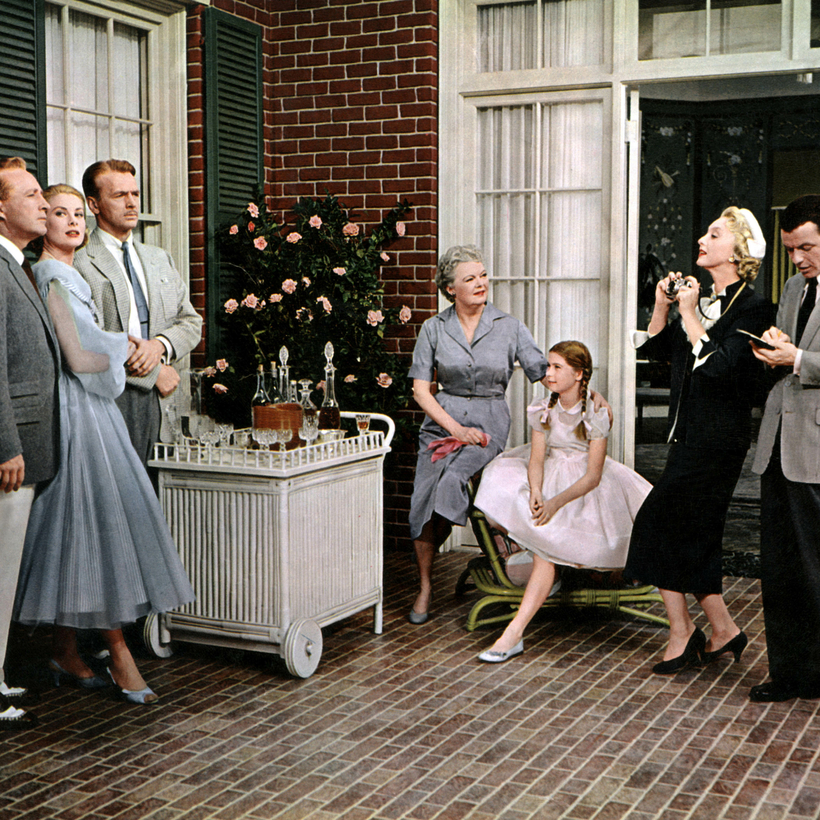In these times, our post-news need for an exquisite martini is seismic.
With proper effort, the cocktail presentation can be as sensory-pleasing as the crystal-clear vodka rolling over one’s tongue. Bar carts hearken back to the black-and-white hues of midcentury-Hollywood glamour and Mad Men–style nostalgia. No wonder they are more coveted than ever.
“There’s something shrine-like about an unmoving bar. My special London bar cart disrupts the landscape of a home, like a garden folly—a little whimsical and eccentric,” notes Andrew Solomon, National Book Award winner for The Noonday Demon: An Atlas of Depression. “In 18th-century France, they never had a dining room. People would unfold a table wherever they were for dinner, which I find incredibly chic. A bar cart can hold just the bottle of gin on ice and a little something to eat if curled up with one’s true love.”
Next to good-looking bottles, arrange an artful assortment of martini glasses, wineglasses, and cocktail tumblers. (Alternatively, hunt for inexpensive vintage glassware on eBay, as I did.) A solid Lucite cart can be found for $120 at the Container Store, or a shagreen style on 1stDibs will require $13,800. In-between options abound.
“Make sure that there are a variety of objects in different heights, so think of the spirits and glasses much like a flower arrangement,” advises my cousin Alice Peterson, the C.E.O. of Pinhook bourbon. She cultivates her cart with more care than one would a prized-orchid shed.
Desirée Rogers, former White House social secretary and current co-owner and C.E.O. of Fashion Fair, fondly recalls her grandmother’s bar cart. “Curating a cart with a good shaker, bar tools, glasses, and napkins is the opposite of throwing cash to solve some design element,” Rogers explains. “Nothing should be too new—all should be classic and special, never something you see repeated over and over.”
I bought my bar cart at a thrift shop that was stuffed with furniture from the old estates of Palm Beach. However, I needed more styling mojo. Enter Pierre Lagrange, Belgian hedge-funder and owner of Huntsman, Savile Row. He tells me that my bar cart has to be wicker. (Mine is metal.) “Wicker is always reminiscent of Miami 1960s, very Babe Paley of that era,” he says.
“There’s something shrine-like about an unmoving bar.”
No one will ever confuse me with Babe Paley, but I’m giving my best shot at self-styled glamour on my bar cart with deep-purple lowballs and vintage champagne coupes in various colors and sizes.
Now that spring is on the horizon, the greatest value of a bar cart is its mobility. “It’s now in my library in front of bookshelves in Nashville,” explains style guru Keith Meacham, co-founder with the late Julia Reed of Reed Smythe & Company. “When the weather gets better, I’ll often move it to my kitchen garden for cocktails. Always have a silver or glass bowl underneath to keep champagne and wine cold.”
“Each of my carts was shipped from Solos in Brazil, but I buy and sell them often—I can’t help but switch it up,” explains Sherry Chris, C.E.O. of Realogy Expansion Brands. “In Palm Beach, it’s now crystal vintage Baccarat and silver from Show Pony; the other cart in Toronto is more eclectic and Canadiana, made of wood and metal.”
Cart décor is a process; it cannot be accomplished with a single shopping trip. “You have to work over time to hunt for themes, colors, and styles that represent your home and your life,” instructs Rogers. “Curating a spectacular bar cart honestly only works if you do it yourself.”
Holly Peterson is the author of The Manny, It’s Hot in the Hamptons, and It Happens in the Hamptons. She has contributed to The New York Times, the Financial Times, Vogue Living, and numerous other publications


